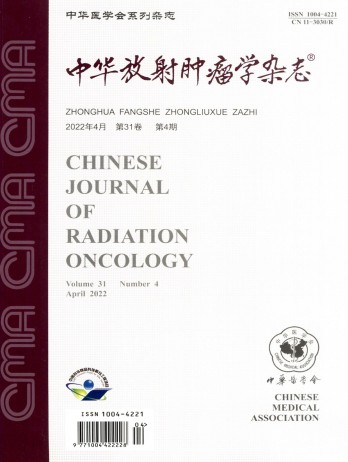基于生成对抗性网络的鼻咽癌患者合成CT生成
引用次数: 0
摘要
目的利用生成对抗性网络(GAN)建立癌症头颈部MRI与CT图像的相关性模型,在MRI引导下进行放疗时生成合成CT(sCT)。方法收集45例鼻咽癌患者治疗前的影像资料和IMRT方案。首先,对MRI(T1)和CT图像进行预处理,包括刚性配准、剪切、背景去除和数据增强等。其次,用GAN对病例进行训练,其中30例被随机选择并放入网络中作为训练集图像进行建模和学习,其余15例用于测试。对预测的sCT和真实CT的图像质量进行统计比较,并将预测sCT后重新计算的剂量分布与真实计划剂量分布的剂量分布进行统计比较。结果测试集预测的sCT的平均绝对误差为(79.15±11.37)HU,SSIM值为0.83±0.03。与处方剂量相比,不同地区水平的剂量分布差异的MAE值小于1%。在2mm/2%和3mm/3%标准下,sCT剂量分布的γ通过率分别高于92%和98%。结论我们成功地提出并实现了用GAN生成癌症头颈部sCT,为实施MRI引导放疗奠定了基础。图像质量和剂量测定的比较表明了该方法的可行性和准确性。关键词:鼻咽肿瘤/磁共振成像引导放疗;生成对抗性网络;合成CT生成本文章由计算机程序翻译,如有差异,请以英文原文为准。
Generative Adversarial Networks based synthetic-CT generation for patients with nasopharyngeal carcinoma
Objective
To establish a correlation model between MRI and CT images to generate synthetic-CT (sCT) of head and neck cancer during MRI-guided radiotherapy by using generative adversarial networks (GAN).
Methods
Images and IMRT plans of 45 patients with nasopharyngeal carcinoma were collected before treatment. Firstly, the MRI (T1) and CT images were preprocessed, including rigid registration, clipping, background removal and data enhancement, etc. Secondly, the cases were trained by GAN, of which 30 cases were randomly selected and put into the network as training set images for modeling and learning, and the other 15 cases were used for testing. The image quality of predicted sCT and real CT were statistically compared, and the dose distribution recalculated upon predicted sCT was statistically compared with that of real planned dose distribution.
Results
The mean absolute error of the predicted sCT of the testing set was (79.15±11.37) HU, and the SSIM value was 0.83±0.03. The MAE values of dose distribution difference at different regional levels were less than 1% compared to the prescription dose. The gamma passing rate of the sCT dose distribution was higher than 92% and 98% under the 2mm/2% and 3mm/3% criteria.
Conclusions
We have successfully proposed and realized the generation of sCT for head and neck cancer using GAN, which lays a foundation for the implementation of MRI-guided radiotherapy. The comparison of image quality and dosimetry shows the feasibility and accuracy of this method.
Key words:
Nasopharyngeal neoplasm/magnetic resonance-image guided radiotherapy; Generative adversarial networks; Synthetic-CT generation
求助全文
通过发布文献求助,成功后即可免费获取论文全文。
去求助
来源期刊
自引率
0.00%
发文量
6375
期刊介绍:
The Chinese Journal of Radiation Oncology is a national academic journal sponsored by the Chinese Medical Association. It was founded in 1992 and the title was written by Chen Minzhang, the former Minister of Health. Its predecessor was the Chinese Journal of Radiation Oncology, which was founded in 1987. The journal is an authoritative journal in the field of radiation oncology in my country. It focuses on clinical tumor radiotherapy, tumor radiation physics, tumor radiation biology, and thermal therapy. Its main readers are middle and senior clinical doctors and scientific researchers. It is now a monthly journal with a large 16-page format and 80 pages of text. For many years, it has adhered to the principle of combining theory with practice and combining improvement with popularization. It now has columns such as monographs, head and neck tumors (monographs), chest tumors (monographs), abdominal tumors (monographs), physics, technology, biology (monographs), reviews, and investigations and research.

 求助内容:
求助内容: 应助结果提醒方式:
应助结果提醒方式:


